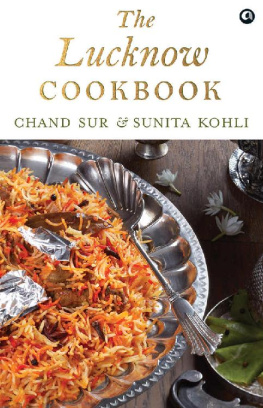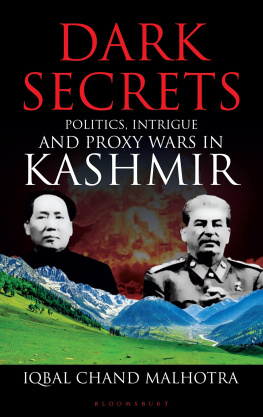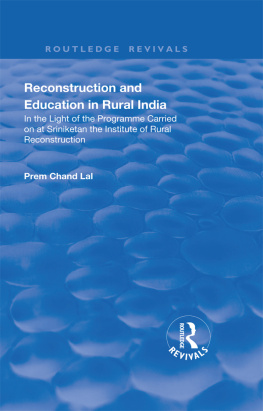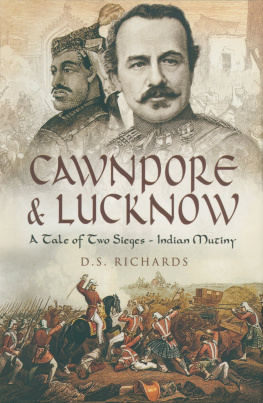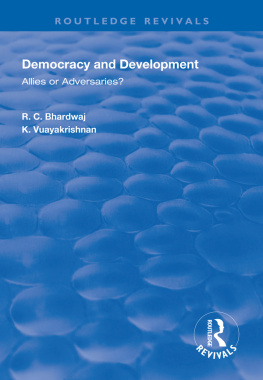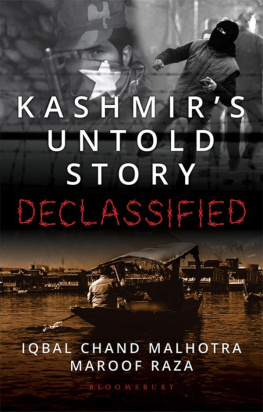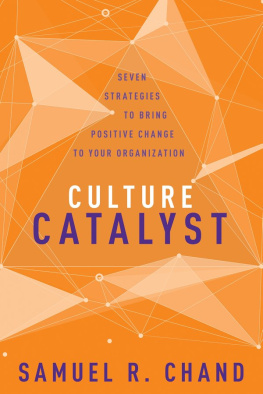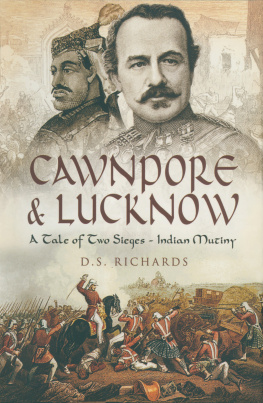Sur Chand - The Lucknow cookbook
Here you can read online Sur Chand - The Lucknow cookbook full text of the book (entire story) in english for free. Download pdf and epub, get meaning, cover and reviews about this ebook. City: India;Lucknow, year: 2017;2018, publisher: Aleph Book Company, genre: Home and family. Description of the work, (preface) as well as reviews are available. Best literature library LitArk.com created for fans of good reading and offers a wide selection of genres:
Romance novel
Science fiction
Adventure
Detective
Science
History
Home and family
Prose
Art
Politics
Computer
Non-fiction
Religion
Business
Children
Humor
Choose a favorite category and find really read worthwhile books. Enjoy immersion in the world of imagination, feel the emotions of the characters or learn something new for yourself, make an fascinating discovery.
- Book:The Lucknow cookbook
- Author:
- Publisher:Aleph Book Company
- Genre:
- Year:2017;2018
- City:India;Lucknow
- Rating:3 / 5
- Favourites:Add to favourites
- Your mark:
- 60
- 1
- 2
- 3
- 4
- 5
The Lucknow cookbook: summary, description and annotation
We offer to read an annotation, description, summary or preface (depends on what the author of the book "The Lucknow cookbook" wrote himself). If you haven't found the necessary information about the book — write in the comments, we will try to find it.
The Lucknow cookbook — read online for free the complete book (whole text) full work
Below is the text of the book, divided by pages. System saving the place of the last page read, allows you to conveniently read the book "The Lucknow cookbook" online for free, without having to search again every time where you left off. Put a bookmark, and you can go to the page where you finished reading at any time.
Font size:
Interval:
Bookmark:
The
Lucknow
COOKBOOK




ALEPH BOOK COMPANY
An independent publishing firm
promoted by Rupa Publications India
First published in India in 2017 by
Aleph Book Company
7/16 Ansari Road, Daryaganj
New Delhi 110002
Copyright Chand Sur and Sunita Kohli 2017
All photographs except those in the Introduction by
Jasmer Singh, courtesy K2India
All rights reserved.
The views and opinions expressed in this book are the authors own and the facts are as reported by them, which have been verified to the extent possible, and the publishers are not in any way liable for the same.
No part of this publication may be reproduced, transmitted, or stored in a retrieval system, in any form or by any means, without permission in writing from Aleph Book Company.
ISBN: 978-93-86021-60-1
1 3 5 7 9 10 8 6 4 2
This book is sold subject to the condition that it shall not, by way of trade or otherwise, be lent, resold, hired out, or otherwise circulated without the publishers prior consent in any form of binding or cover other than that in which it is published.
In memory of
my father, Inder Prakash Sur
(14.12.19143.3.1992),
a gentleman and an epicure
and
Kunwar Vishvjeet Singh of Kapurthala
(29.10.19466.8.2017),
an intellectual colossus and a gastronome
and
Kamal Chopra
(27.12.194612.8.2017),
resolute and brilliant

Contents

A Note About the Book
Lucknow has always been a city of refinement and its cuisine reflects these sensibilities. In many ways, Lucknow was considered the cultural capital of North India. It was here that the Urdu language was developed to near perfection. It was here, too, that the Lucknow Gharana of Kathak dance and the Bhatkhande Institute of classical musicboth major institutionswere established. Art and architecture, particularly Indo-Saracenic architecture, flourished in this city built along the banks of the river Gomti. Architectural heritage is history written in stone. This is true of the many fine buildings that still exist in this city.
Most importantly, Lucknow was and still is a city known for its composite culture, its Ganga-Jamuni tehzeeb. The material manifestations of this syncretic culture and refinement, this tehzeeb, were symbolized in the combined use of gold (Ganga) and silver (Jamuna)such as in silver objects, parts of which were gold washed, or in the use of gold and silver threads in Awadhs famous brocades woven in textile centres in Varanasi and Lucknow. The quintessence of this culture was an amalgamation of the finest of Hindu and Muslim thoughts and their mutual acceptance. This composite culture, of plurality and complexity, was also reflected in the easy acceptance of the varied cuisines of the various communities that resided in Lucknow.
My father had arrived in Lucknow in 1947, shortly after the Partition of India, to make a home in this city. Seventy years later we still call Lucknow our home town although most of us no longer live there. Lucknow has always been an accepting societymy parents were warmly welcomed by several old residents when they first moved here. The citys rich and varied cuisine is partly due to this easy acceptance of people and their cultures from other parts of India and of those who arrived from beyond its borders, as did my parents and a maternal aunt and her husband after they were compelled to leave Lahore and their home in Undivided India.
The culture of Lucknow, which my parents encountered in the late 1940s, was undoubtedly Muslim. But Lucknow was also home to communities of HindusBrahmins, Kshatriyas and Kayasthasalong with British residents who had stayed on post 1947, Anglo-Indians, Christians, Parsis and Bengalis. They had, for generations, resided in Lucknow. Sindhis and Punjabis were rather late entrants. Each community had its own food preferences and many different methods of cooking.
The samosa, in its present form, was invented in Lucknow. Today, it has become ubiquitous and is found the world over. Chaat also originated in Lucknow. Lucknow also has its own distinctive biryanis and pulaos, both non-vegetarian and vegetarian. It introduced the dum pukht style of cooking. Lucknows cuisine was influenced by the cuisines that travelled down the Silk Road from Turkey, Persia, Afghanistan and then down to Quetta and Lahore, eventually finding their way to Lucknow. Many of the recipes in this cookbook are distilled from this rich culinary heritage.
The British presence in Lucknow had changed the eating habits among the elite. So most homes began to serve a desi lunch and an angrezi dinner. Among my mothers women friends, coffee parties became very popular, as did high teas. After the Carlton Hotel introduced its popular Sunday brunches, many families also started to serve brunches at home. Anglo-Indian food, where continental recipes were adapted to suit Indian tastes, has been the subject of a previous book by my motherContinental Cuisine for the Indian Palate. That book has recipes of what we called angrezi khana.
The recipes in this cookbook are quite distinctly Lucknowi, whose hallmark is food that is delectable to behold, is aromatic and delicate and is, most importantly, nutritious. Many recipes are the signature dishes of particular homes. This book is primarily about the food that was served in our homes and in the homes of our numerous friends, with all its seasonal variations. This cookbook needed to be written by my mother, a legendary cook, to complete the story of Lucknows delicious and varied everyday cuisine. It is a privilege to be asked to co-author this book with her and to write an account of my parents fractured histories. These are the histories that have produced the food we serve in our homes.
David Lowenthal, the American historian renowned for his work on heritage and spatial concepts of the past and the future, had famously pronounced that the past is a foreign country. This cookbook, although palpable with nostalgia, selectively recaptures events and objects from the past that are a part of the intangible heritage of food and familial memories of gentler times. These are collective memories that conserve a sense of continuity, of belonging and of being rooted. I believe food engenders social and family harmony; it anchors us and connects us to the past, grounds us in the present and gives us a sense of identity and belonging. Our personal histories define us and I have chosen to define this partly through Lucknows food traditions. The preparation of food is learnt by observation, it is a process of osmosis. In our family, all four generations are reasonably good cooks. This book documents the recipes that we have learnt from my mother and from our many friends in Lucknow.
One can certainly cook from this book, but one can also read through the recipes to get a glimpse of Lucknowi culture and of the lives behind these recipes. This is a book for cooks and for armchair cooks because, for people who really love food, it is a lens through which to view this particular world.
Next pageFont size:
Interval:
Bookmark:
Similar books «The Lucknow cookbook»
Look at similar books to The Lucknow cookbook. We have selected literature similar in name and meaning in the hope of providing readers with more options to find new, interesting, not yet read works.
Discussion, reviews of the book The Lucknow cookbook and just readers' own opinions. Leave your comments, write what you think about the work, its meaning or the main characters. Specify what exactly you liked and what you didn't like, and why you think so.

